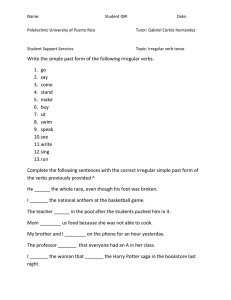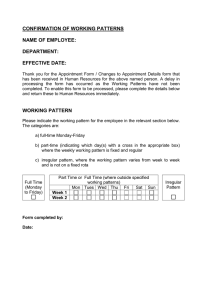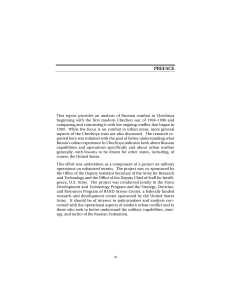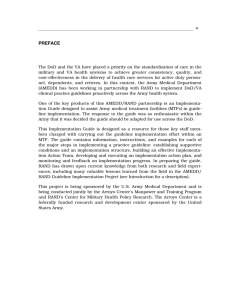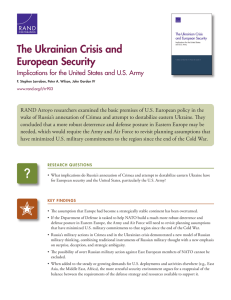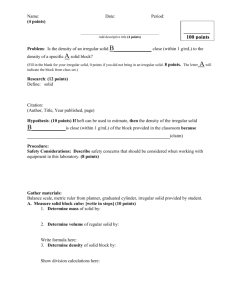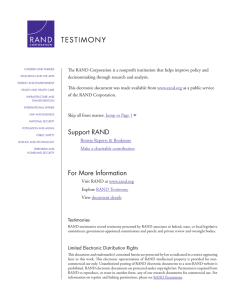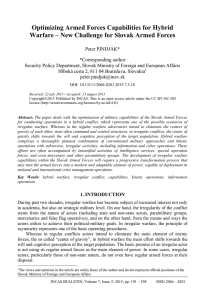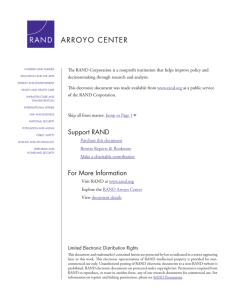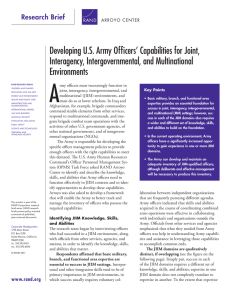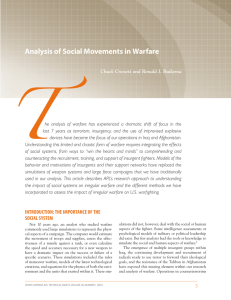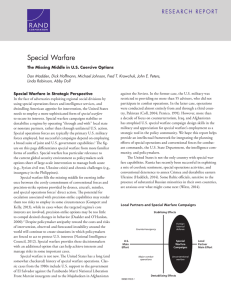Improving Strategic Competence Lessons from 13 Years of War
advertisement
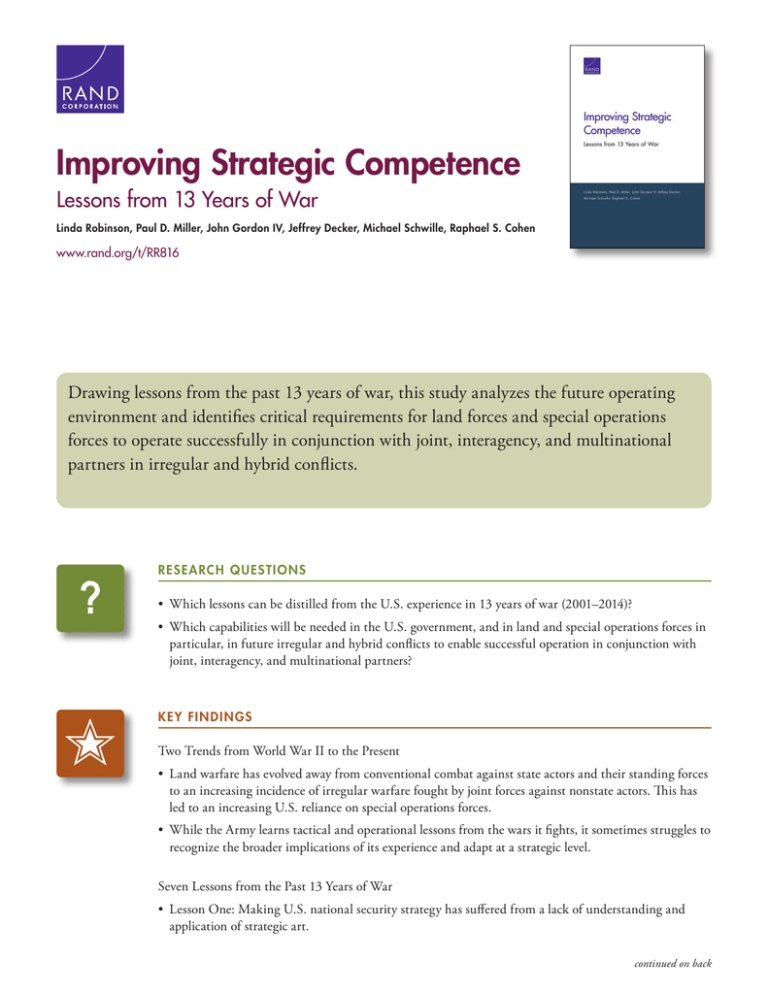
C O R P O R AT I O N Improving Strategic Competence Lessons from 13 Years of War Linda Robinson, Paul D. Miller, John Gordon IV, Jeffrey Decker, Michael Schwille, Raphael S. Cohen www.rand.org/t/RR816 Drawing lessons from the past 13 years of war, this study analyzes the future operating environment and identifies critical requirements for land forces and special operations forces to operate successfully in conjunction with joint, interagency, and multinational partners in irregular and hybrid conflicts. ? ✭ RESE A RC H Q U ESTI O NS • Which lessons can be distilled from the U.S. experience in 13 years of war (2001–2014)? • Which capabilities will be needed in the U.S. government, and in land and special operations forces in particular, in future irregular and hybrid conflicts to enable successful operation in conjunction with joint, interagency, and multinational partners? K E Y FI N D I N GS Two Trends from World War II to the Present • Land warfare has evolved away from conventional combat against state actors and their standing forces to an increasing incidence of irregular warfare fought by joint forces against nonstate actors. This has led to an increasing U.S. reliance on special operations forces. • While the Army learns tactical and operational lessons from the wars it fights, it sometimes struggles to recognize the broader implications of its experience and adapt at a strategic level. Seven Lessons from the Past 13 Years of War • Lesson One: Making U.S. national security strategy has suffered from a lack of understanding and application of strategic art. continued on back • Lesson Two: An integrated civilian-military process is a necessary, but not sufficient, condition of effective national security strategy. • Lesson Three: Because military operations take place in the political environment of the state in which the intervention takes place, military campaigns must be based on a political strategy. • Lesson Four: Because of the inherently human and uncertain nature of war, technology cannot substitute for sociocultural, political, and historical knowledge and understanding. • Lesson Five: Interventions should not be conducted without a plan to conduct stability operations, capacity-building, transition, and, if necessary, counterinsurgency. • Lesson Six: Shaping, influence, and unconventional operations may be cost-effective ways of addressing conflict that obviate the need for larger, costlier interventions. • Lesson Seven: The joint force requires nonmilitary and multinational partners, as well as structures for coordinated implementation among agencies, allies, and international organizations. To Do R ECOM M EN DATI O NS • U.S. strategic competence should be enhanced by educating civilian policymakers and revising how policy and strategy are taught to the U.S. military. • The military should examine ways to build effective, tailored organizations that are smaller than brigades and equipped with all the needed enablers to respond to a range of contingencies. • Special operations forces (SOF) and conventional forces should expand their ability to operate together seamlessly in an environment of irregular and hybrid threats. In particular, new operational-level command structures could facilitate both SOF-centric and SOF-conventional operations. • Innovative and multifunctional personnel can make a smaller force more effective, but the incentives must be systemic to reward personnel for creativity, risk-taking, and acquisition of multiple specialties. The principle of mission command could be deepened to permit further decentralization and delegation of initiative. • Joint and service capabilities that create and maintain regional familiarity or expertise, advisory capability, and other special skills for irregular warfare and stability operations should be preserved and refined at the level needed to execute current military plans. • Civilian experts should be collocated at key commands and sufficiently robust country teams and, when necessary, at the tactical level in formations that provide force protection and enable them to perform their duties. • The U.S. government could improve its preparation of U.S. personnel to serve in coalitions and to effectively employ non-U.S. expertise by identifying in a systematic manner both its own gaps and the potential external resources to meet them. A RRO YO CENT ER RAND Arroyo Center is the Army’s federally funded research and development center for studies and analyses. Its mission is to help Army leaders make decisions that are informed by objective, high-quality analysis. For more information visit Arroyo’s website at www.rand.org/ard.
